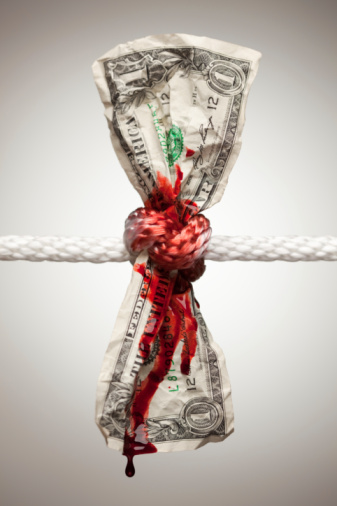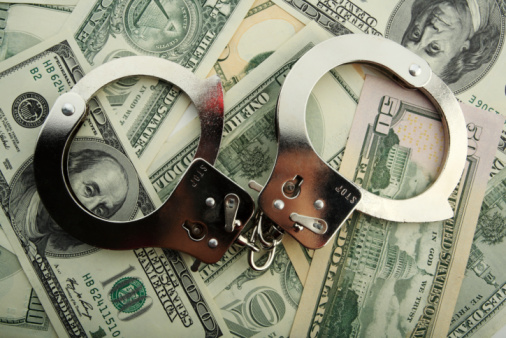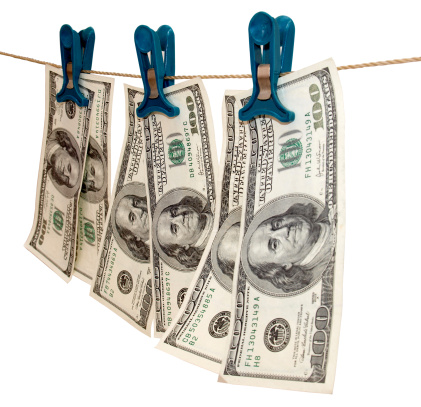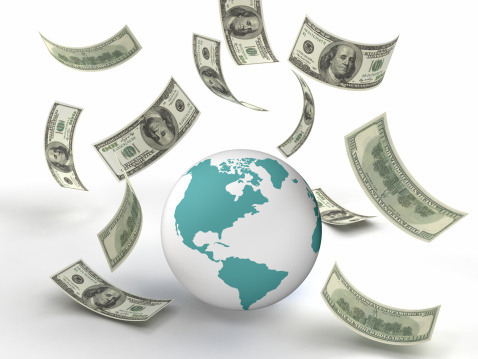Attack on Your Retirement
The U.S. Government has launched an all-out attack on its retirees, crushing their investment returns with low interest rates. Be it intentional, or ignorance, the government is artificially pushing down returns, which does the most harm to our nation’s seniors.
As the United States attempts to stimulate its economy with cheap money, it’s the seniors, who need safe U.S. investments, that will suffer. Just when you should be invested in boring, stable, and guaranteed, the returns on U.S. treasuries are miserable. Adding to this mess, the U.S. economy is the epitome of risk, but returns are lower. When treasury returns should be higher to compensate for this risk, you are lucky to net .5% after an adjustment of 2% for inflation.
* That is to say the yield to maturity on a 20 year treasury is 3% and inflation is 2%. At least you’re not retiring in Europe, where returns are 1% … and my see .5% this year (before inflation).
This all means that America’s seniors are left with two choices: 1) stick with treasuries and reduce your lifestyle, or 2) diversify out of the United States. I suggest there are equal or lower risk investments available offshore that are paying for better returns.
But, first, let me talk about my premise that America’s seniors are under attack from their own government. The Federal Reserve has been pushing law rates for the last six years. This has resulted in miserable returns for those who stuck with treasuries. Obviously, it’s Seniors and Retirees who most often look to protect their nest egg with conservative investments and are thus hardest hit by this policy.
As you’ve read in my previous posts, returns on treasuries are about half of what one would expect from the market. These low rates are the result of Obamanomics. Lower returns mean you have less to live on or that you must take on more risk … a Hobson’s choice for a retiree living on a fixed income.
Next, let’s talk about my claim of 2% inflation over the next decade. I extract this from the yield to maturity of 20 year U.S. treasuries at 3% (going to 2.5%). U.S. the yield to maturity of inflation protected treasuries, which is about .6%. The spread between these is the break-even inflation rate of 2.4%.
Some of this 2.4% represents a bonus for taking a risk on the inflation adjusted treasury (called a TIPS). When you buy a treasury, you get a “guaranteed” return. When you buy a TIPS, you get a return fixed to inflation. If it goes higher than expected, you make more. If it goes lower, you earn less … thus, TIPS include a bonus for taking that risk.
Most financial analysts agree that this risk is worth .4%. Therefore, the expected inflation is 2%. Of course, expectations are often wrong, but that’s the rationale behind TIPS and how we get to a 2% inflation number.
And this can bring you, my valued reader, to why holding U.S. dollars in your retirement account results in a net return of -2% per year. If you hold your account in cash, its value is going down by the rate of inflation.
All of this is based on the assumption that the United States dollar, and treasury, are the world’s safest investments. I believe this is a deeply flawed assumption. Now, I’m not a doomsayer, but I do think that America and the dollar face significant risks and that these risk are not priced in the market.
For example:
- the Federal Reserve is printing money as if it’s going out of style,
- quantitative easing is artificially propping up the stock market and the dollars,
- France has begun to move away from the dollar as its transactional currency,
- Russia wants to denominate all oil and gas contracts in Rubles or Euros, eliminating the petrodollar, and
- The world’s emerging markets (the BRICS, Brazil, Russia, India, China and South Africa) have united against the IMF and Worldbank in preparation of a concerted effort to push the dollar from dominance.
- The Fed’s balance sheet is 25% larger than it was just one year ago ($4 trillion – see Grant’s Interest rate observer).
You will find detailed articles on each of these risks on this site. My point here is that these risks exist. It’s up to you to figure out how much they must be protected against.
So, where might you turn for higher secured returns? Most analysts agree that the United States is in for a decade of flat, slow growth. From the Economist to Forbes, everyone is predicting tough times ahead. You can also find an article here explaining why the U.S. stock market, which is at record highs, is likely to be quite average over the next several years.
I believe it’s time for the American retiree, or anyone looking to boast the returns in their retirement account, to invest abroad. I also believe you should be defensively minded as you decide how to diversify your portfolio. Now is not the time to gamble or to play a risky gambit. Focus on safety, security and diversification out of the dollar.
The most basic form of defense, and one I certainly don’t recommend, is to the buy the 10 year U.S. treasury and hope for better by the time it matures. This means your inflation adjusted return over that decade will be around .3% rather than the lofty .6% found in the 20 year.
You can do much better than that offshore. Here is what I recommend.
First, get your retirement account out of the U.S. and out of harm’s way. Form an offshore IRA LLC and move your IRA into that structure. This will give you control over the account and allow you to invest in just about anything you like offshore. For more information, see my page Self Directed IRA at the top right of this site.
Next, consider investing in foreign real estate with your savings or your IRA. This is an asset which has a high ROI compared to the treasury, and you can invest in a country (such as Panama) with a strong history and appreciation curve. I also note that inflation, if it exceeds the 2% anticipated above, is likely to help your returns in Panama rather than hurt them.
I also suggest it is time to acquire a foreign residency in case you want to remove yourself from the United States. While times are good, these residencies are easy to get in countries like Belize, Panama, Colombia, etc. If things don’t go well in the next few years, some of these programs are likely to be eliminated.
My preferred residency program is offered by Panama. If you combine an investment in teak (around $15,000) with the favored nations visa, you can get residency in no time. Considering the minimal commitment, compared to other programs that require real estate purchases in the hundreds of thousands of dollars, this is a very efficient solutions.
Finally, I suggest you buy physical gold and store it outside of the United States. Gold is the best hedge against a system wide collapse and the only guaranteed investment that will increase in value if the dollar declines. If you’re like me, you think a realignment of the dollar and America’s way of life is more likely than a total failure. Even so, you should move some of your portfolio to physical gold as a hedge against this 10% to 35% realignment.
I never recommend paper gold. Stocks, funds, and gold certificates, are of little value in a major crisis. I also avoid the gold documents offered in Australia and the Perth Mint. Those are gold allocations, not physical gold you take possession of.
Note that physical gold (like real estate) need not be reported to the U.S. government. Gold certificates and stocks are subject to the FBAR or Foreign Assets reporting requirements, and thus are not private if you wish to comply with U.S. law … as we all must. Physical gold held in your name is exempt from these forms.
I hope this post has been helpful. If you would like more information on any of these topics, please give us a call or write to info@premieroffshore.com.
* Premier is not a gold dealer and we don’t make a commission on any sales. These suggestions are meant as a guide. We are happy to introduce you to qualified professionals.











